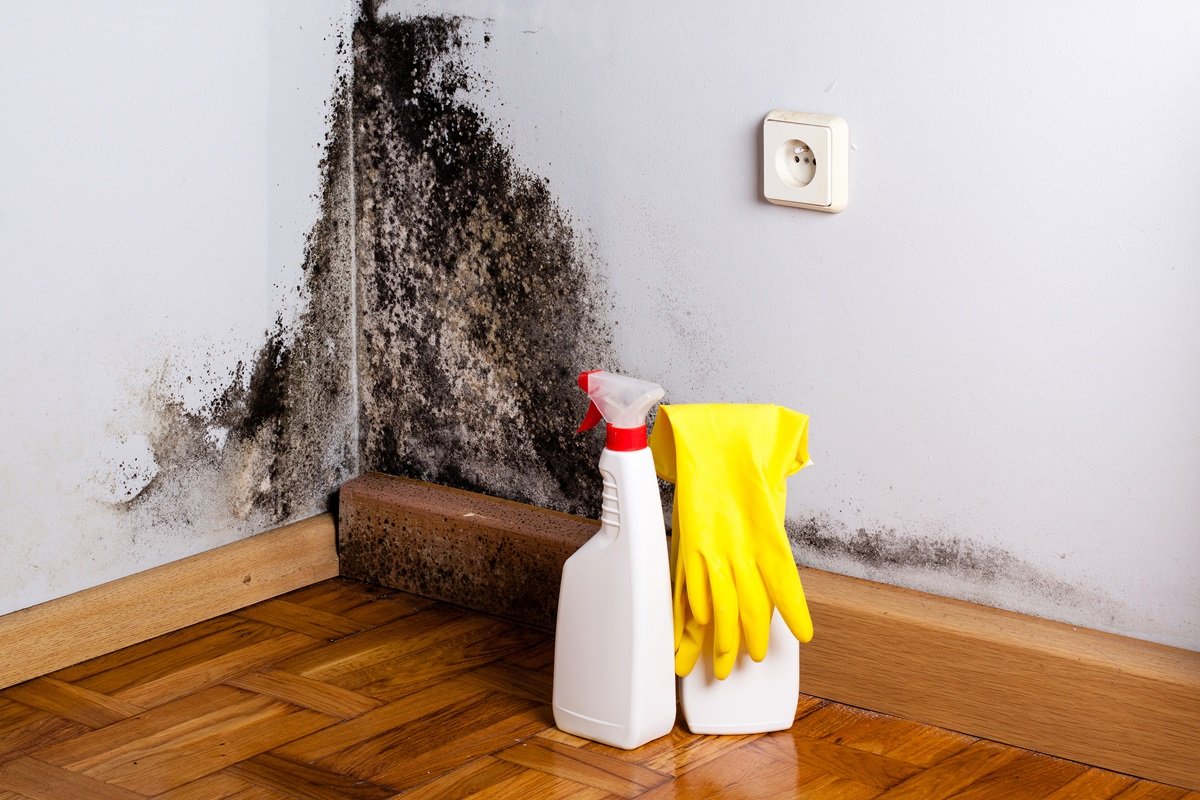Identify What Mold Really Exist
Mold is a type of fungus that can grow almost anywhere, especially in damp, dark, and humid places. There are many types of mold, but the most common ones found in homes are black, green, and white molds. Mold spreads through tiny spores that float in the air. When these spores land on moist surfaces, they start growing.
Some molds are harmless, but others can cause health problems, especially for people with allergies or asthma. It’s important to know what type of mold is in your home because some types, like black mold, can be dangerous. Understanding the kind of mold in your home helps you take the right steps to remove it.
How Mold Grows In Your Home
Mold can grow in different parts of your home, especially where there is moisture. Bathrooms, kitchens, basements, and attics are common places where mold can thrive. Mold needs water to grow, so leaks in your roof, windows, or plumbing can lead to mold problems.
If your home is humid, that’s another way mold can grow quickly. When mold spores find a wet surface, they start spreading and can grow within 24 to 48 hours. Mold remediation Maine can help. They can find and fix mold before it becomes a bigger problem.
Health Risks Linked To Mold Exposure
Mold exposure can lead to several health problems. Mold releases tiny spores into the air, and when you breathe them in, it can cause allergic reactions. Symptoms like sneezing, coughing, runny nose, and itchy eyes are common when mold is present. People with asthma or other lung issues may have severe reactions. They might have trouble breathing or wheezing.
In some cases, mold exposure can lead to long-term health problems, especially for people with weakened immune systems. Black mold, in particular, can cause serious respiratory issues. It’s important to remove mold as soon as possible to protect your health.
Signs You Might Have Mold
There are a few signs that mold might be growing in your home. One of the first signs is a musty smell, especially in damp areas like basements or bathrooms. You might also see dark spots on walls, ceilings, or floors, which could be mold. Mold can also cause surfaces to feel slimy or soft to the touch.
In some cases, mold might grow behind walls or under floors, making it hard to see. If you notice any of these signs, it’s important to take action quickly to stop the mold from spreading and causing more damage.
Importance Of Testing For Mold
Testing for mold is important because not all mold is easy to see. Some types of mold can hide behind walls or under carpets, where they can grow and spread without you knowing. Mold testing helps you find out if there is mold in your home, how much is present, and what type it is. This information is important because certain types of mold, like black mold, can be more dangerous than others.
Testing also helps you understand the source of the mold, so you can fix the problem and prevent it from coming back. Getting your home tested for mold is a good way to keep your living space safe and healthy.
Mold Testing For Safe Living Spaces
Mold testing is a key step to making sure your home is safe to live in. When mold is present, it can affect the air quality in your home and cause health problems for you and your family. By testing for mold, you can identify the exact areas where mold is growing and take steps to remove it.
This is especially important if someone in your home has allergies or asthma, as mold can make their symptoms worse. Mold testing Maine services can help you figure out the extent of the mold problem and recommend the best ways to get rid of it.

Types Of Mold Testing Methods
There are several ways to test for mold in your home. One common method is an air test, which measures the number of mold spores in the air. This helps identify hidden mold that might not be visible. Another method is surface testing, where samples are taken from different areas of your home to see if mold is present.
Bulk testing involves taking a piece of material, like a carpet or a wall section, to check for mold. Each method has its benefits, and sometimes many tests are needed to get a full picture of the mold problem in your home.
What To Do After Mold Testing
After mold testing, the next step is to remove the mold if any is found. The test results will tell you what kind of mold is present and how much there is. If the mold problem is small, you might be able to clean it yourself using mold-killing products.
For larger problems, or if the mold is toxic, it’s best to call a professional. They have the right tools and knowledge to safely remove the mold without causing it to spread. Keeping your home dry and fixing leaks can help stop mold from coming back after it’s been removed.
Preventing Mold Growth In The Future
Once mold has been removed, it’s important to prevent it from coming back. The best way to do this is by keeping your home dry. Fix any leaks in your roof, windows, or plumbing right away, as mold needs moisture to grow. You can also use dehumidifiers in areas like basements or bathrooms to reduce moisture levels. Good ventilation is key, so make sure your home is well-ventilated, especially in areas that get damp. Regular inspections and mold removal Maine services can also help you catch any new mold growth before it becomes a bigger issue.
Read More: How Chlorine Dioxide Tablets Help To Eliminate Bacteria?

